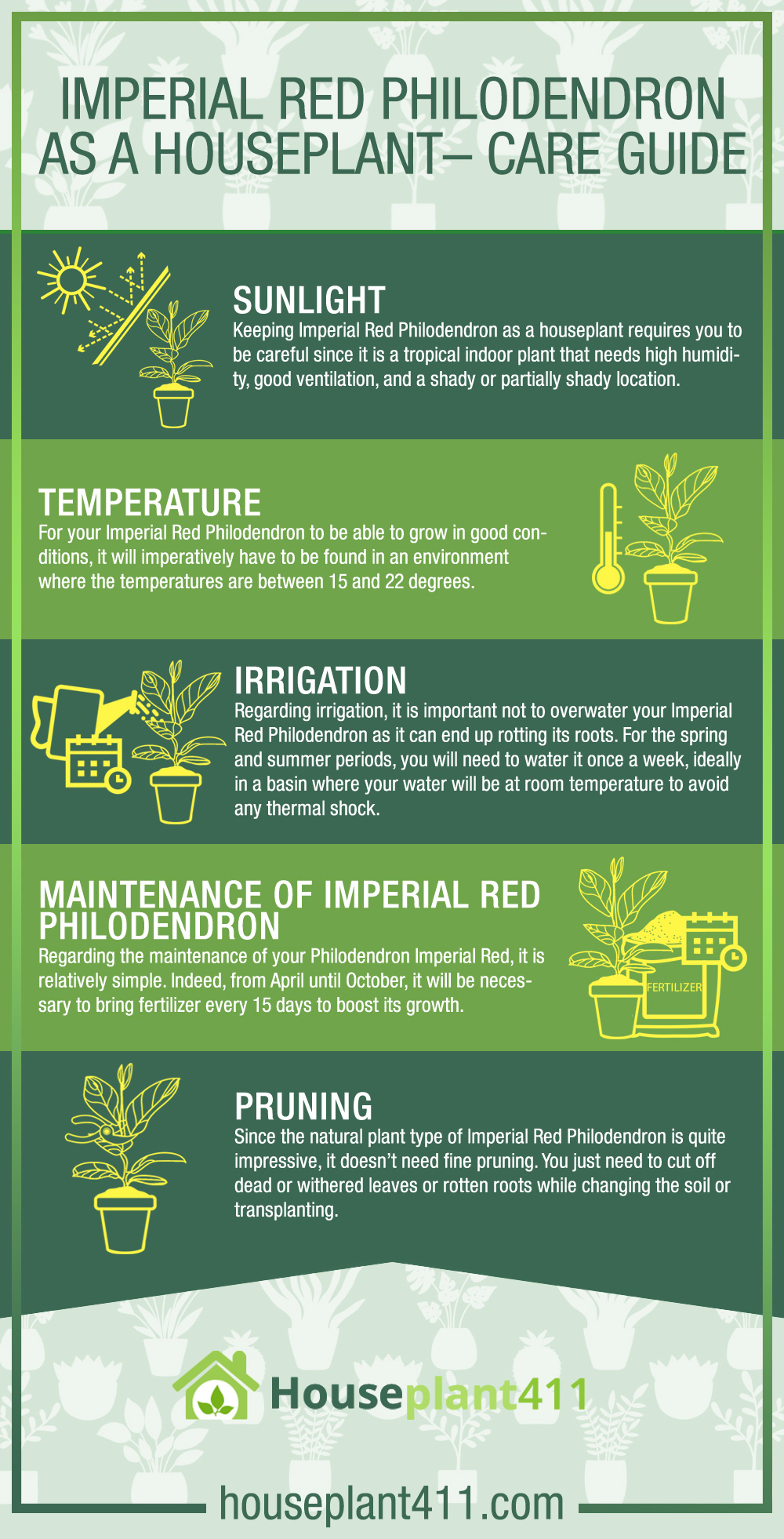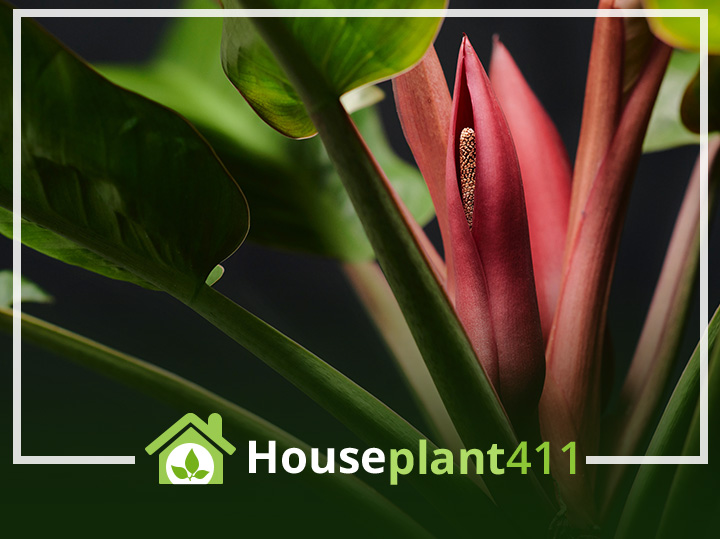Enjoy decorating your home with the Imperial Red Philodendron, an indoor plant highly valued for its leaves that are reddish-colored undersides. It offers a beautiful display to your interior when its huge, red-violet, triangle-shaped leaves cascade down a growing surface. In fact, the leaves have given this Philodendron variety its name.
In addition to working as an incredible interior designing element, it is a champion air-purifying houseplant perfect for indoors.
Here’s an explanation of the magnificence and benefits of the Imperial Red Philodendron as a houseplant!
Imperial Red Philodendron as a Houseplant
A Beautiful Plant
Indoor plant par excellence, the Philodendron Imperial Red as a houseplant immediately brings a tropical touch to your decoration. This fast-growing houseplant with large, glossy leaves with shades of red, bronze, purple, and purple creates a colorful atmosphere in any shaded area of your home or office.
Imperial Red Philodendron is a magnificent species native to tropical climates. Its oval and slightly triangular leaves immediately bring a touch of exoticism to your interior. The leaves are dark green with a striking contrast of brilliant shades of red and violet. In addition, the purplish red petiole adds to this already colorful spectacle. It is easy to grow and will suit beginner gardeners who wish to have a green space at home.
Imposing and intense, this plant will be the protagonist wherever you put it. It is super useful and cheap to fill an empty corner and expands radially at will.
A Champion Air-Purifying Plant
Choosing Imperial Red Philodendron as a houseplant is also beneficial. Besides being a remarkably beautiful plant with magnificent leaves, it is also a winner in purifying air. It absorbs harmful particles in the air, breaks them down at its roots, and makes the air healthier by converting CO2 to oxygen. Plus, the process of regulating evaporation also improves humidity.
Imperial Red Philodendron as a Houseplant–Care Guide
Sunlight
Keeping Imperial Red Philodendron as a houseplant requires you to be careful since it is a tropical indoor plant that needs high humidity, good ventilation, and a shady or partially shady location.
This is why it must be kept away from heaters that give off dry heat and the front door and windows because of the fresh drafts. In addition, it will need light to grow in good conditions without the sun’s rays being direct or too hot. In addition, the soil must remain moist.
Tip: Ideally, place it 20-40 inches from the window where direct sunlight comes in.
When planting in a garden, place it under a tree or where it receives sufficient sunlight but indirectly.
If the leaves start to turn yellow, it indicates that the Philodendron is receiving too much sunlight. The solution is to move it from the site, away from the window, or filter the light with a curtain.
It is also important to note that this plant should not be moved from light to dark. This could cause stress to the plant and affect its development. The most remarkable part of these plants is their leaves, so you must take good care of them to enjoy all their splendor.
Temperature
Imperial Red Philodendron is native to the tropical regions of Central and South America and grows favorably in a warm and humid environment.
For your Imperial Red Philodendron to be able to grow in good conditions, it will imperatively have to be found in an environment where the temperatures are between 15 and 22 degrees.
During winter, the ideal relative humidity for the plant is higher than 80%, and the temperature should not be less than 10-15.
In summer, pay special attention since it grows vigorously in this season. Keep the soil moist and add slow-release fertilizer. Also, regular spraying is a must in summer.
Irrigation
Regarding irrigation, it is important not to overwater your Imperial Red Philodendron as it can end up rotting its roots. For the spring and summer periods, you will need to water it once a week, ideally in a basin where your water will be at room temperature to avoid any thermal shock.
On the other hand, in winter, you can space out the watering because it is a plant that also fears stagnant water, which risks rotting its roots.
Finally, it is recommended to keep the soil slightly moist and spray the leaves from time to time to allow them to gorge themselves with moisture.
If the leaves begin to close with brown tones, it indicates it is receiving too much water. These damaged leaves can be safely cut when they break from the trunk. In addition, in a short time, new leaves will grow again.
Tip: Let the soil dry out slightly, up to 2 or 3 cm deep, between waterings.
Maintenance of Imperial Red Philodendron
Regarding the maintenance of your Philodendron Imperial Red, it is relatively simple. Indeed, from April until October, it will be necessary to bring fertilizer every 15 days to boost its growth. On the other hand, it is disease resistant and will not require your special attention.
Pruning
Since the natural plant type of Imperial Red Philodendron is quite impressive, it doesn’t need fine pruning. You just need to cut off dead or withered leaves or rotten roots while changing the soil or transplanting. It promotes the growth of new leaves and flowers.

Imperial Red Philodendron as a Houseplant Stands Out From the Rest
Indeed, Imperial Red Philodendron is a beautiful and easy-to-care-for plant that you can keep indoors and in your garden. This tropical plant grows easily and adds charm to your interior, flexing its large red-violet leaves and purifying the air as a bonus!

